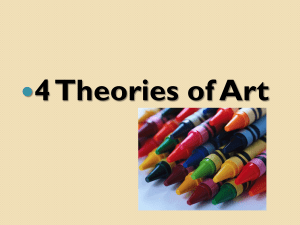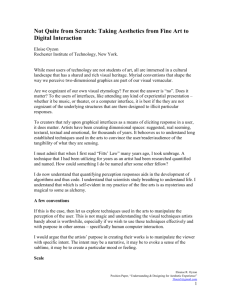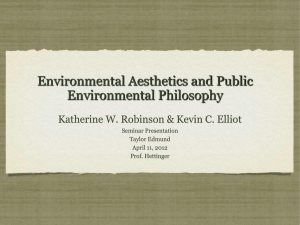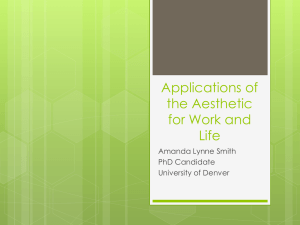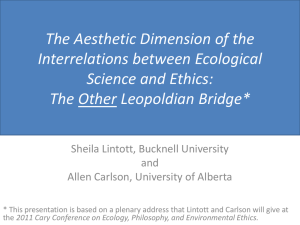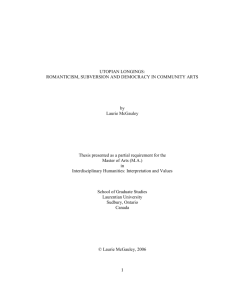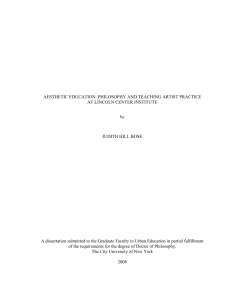Annotated bibliography - Arts Education Partnership
advertisement
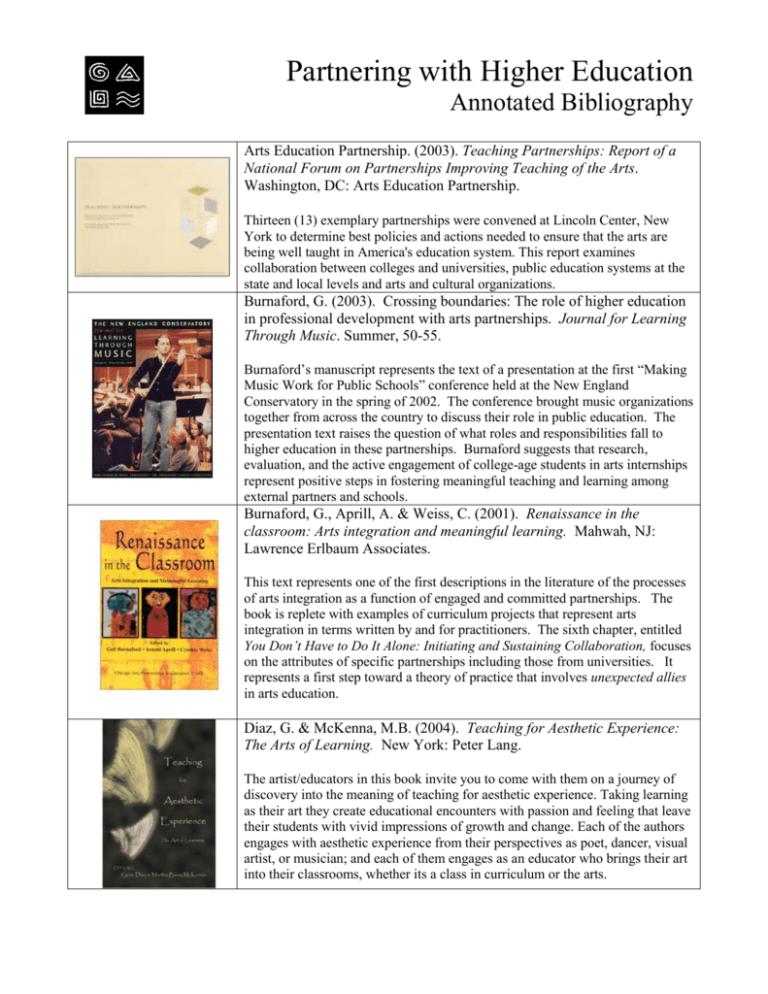
Partnering with Higher Education Annotated Bibliography Arts Education Partnership. (2003). Teaching Partnerships: Report of a National Forum on Partnerships Improving Teaching of the Arts. Washington, DC: Arts Education Partnership. Thirteen (13) exemplary partnerships were convened at Lincoln Center, New York to determine best policies and actions needed to ensure that the arts are being well taught in America's education system. This report examines collaboration between colleges and universities, public education systems at the state and local levels and arts and cultural organizations. Burnaford, G. (2003). Crossing boundaries: The role of higher education in professional development with arts partnerships. Journal for Learning Through Music. Summer, 50-55. Burnaford’s manuscript represents the text of a presentation at the first “Making Music Work for Public Schools” conference held at the New England Conservatory in the spring of 2002. The conference brought music organizations together from across the country to discuss their role in public education. The presentation text raises the question of what roles and responsibilities fall to higher education in these partnerships. Burnaford suggests that research, evaluation, and the active engagement of college-age students in arts internships represent positive steps in fostering meaningful teaching and learning among external partners and schools. Burnaford, G., Aprill, A. & Weiss, C. (2001). Renaissance in the classroom: Arts integration and meaningful learning. Mahwah, NJ: Lawrence Erlbaum Associates. This text represents one of the first descriptions in the literature of the processes of arts integration as a function of engaged and committed partnerships. The book is replete with examples of curriculum projects that represent arts integration in terms written by and for practitioners. The sixth chapter, entitled You Don’t Have to Do It Alone: Initiating and Sustaining Collaboration, focuses on the attributes of specific partnerships including those from universities. It represents a first step toward a theory of practice that involves unexpected allies in arts education. Diaz, G. & McKenna, M.B. (2004). Teaching for Aesthetic Experience: The Arts of Learning. New York: Peter Lang. The artist/educators in this book invite you to come with them on a journey of discovery into the meaning of teaching for aesthetic experience. Taking learning as their art they create educational encounters with passion and feeling that leave their students with vivid impressions of growth and change. Each of the authors engages with aesthetic experience from their perspectives as poet, dancer, visual artist, or musician; and each of them engages as an educator who brings their art into their classrooms, whether its a class in curriculum or the arts. Partnering with Higher Education Annotated Bibliography Greene, M. (2001). Variations on a Blue Guitar: The Lincoln Center Institute Lectures on Aesthetic Education. New York: Teachers College Press. This work brings together 25 years of lectures on aesthetic education by Lincoln Center Institute’s philosopher in residence, Maxine Greene. Most were presented in the course of LCI’s Summer Sessions for teachers, and in them, Greene weaves together a discussion of art, self-discovery, education, and the exploration of aesthetic education as crucial for students and teachers in their lives and classrooms. In many ways these lectures form the argument for incorporating study of the arts throughout teacher education. Holzer, M. F (2005). Many layered multiple perspectives: Aesthetic education in teaching for freedom, democracy and social justice.” In N. M. Michelli & D. L. Keiser (Eds.) Teacher Education for Democracy and Social Justice. New York: Routledge. This chapter describes how aesthetic education, as practiced by Lincoln Center Institute, can become part of teacher education programs in a way that fosters a truly informed democratic citizenry. It details not only the practice of aesthetic education, but also shows how this practice can lead to democratic values, such as respecting multiple perspectives, understanding interdependence, and asking important questions. It is embedded in a collection that examines how the purposes of education for democracy can be sustained at a time when they are being reshaped by national and state policy. Holzer, M. F. & Noppe-Brandon, S. (Eds.). (2005). Community in the Making: Lincoln Center Institute, the Arts, and Teacher Education. New York: Teachers College Press. The 15 essays that make up this anthology are authored by various educators, some in collaboration with teaching artists, whose institutions work within the Teacher Education Collaborative (TEC), Lincoln Center Institute’s partnership with colleges/programs of teacher education. These essays are individual reflections on the sometimes intense experience of aesthetic education, but they are often more than that: musings on the present state of arts in education and its ups and downs in history, as well as a constant reconsideration of, and dialog on, aesthetic education that marks all Institute work. Partnering with Higher Education Annotated Bibliography Lieberman, A. & Miller, L. (2004). Teacher leadership. San Francisco: Jossey-Bass. This concise text describes the authors’ research into the characteristics of teacher leadership that contribute to communities of practice. The book includes six portraits of teacher leaders who have made changes in their schools and their communities by being researchers, scholars, and mentors. Lieberman and Miller propose that only by seeing themselves in these three roles can teachers truly take leadership in their schools. While university faculty are not directly the focus of this text, the discussion of teacher leader roles suggests the need for true collaborative mentoring in order to foster leaders in communities of practice that include higher education. Myers, D.E. (Sept/Oct, 2003). Quest for excellence: The transforming role of university-community collaboration in music teaching and learning. Art Education Policy Review. According to emerging research in school reform and improvement, collaboration among schools and some external partners can, under certain conditions, enhance student learning. If designed and executed well, learningcentered partnerships expand the range of expertise available to schools and engender a sense of community responsibility for education. However, artists attempting to function as educators may disregard research on music learning, believing that by getting children to participate they have educated them. Teaching Artist Journal published by Lawrence Erlbaum Associates, Inc., The Teaching Artist Journal (TAJ) is a quarterly forum for teaching professionals. TAJ invites volunteers to read and summarize recent research in arts education and related fields, with an eye toward practical applications for teaching artists, to contribute to the journal on a rolling basis in accordance with the quarterly's deadlines. Every article is peer-reviewed, written by and for teaching artists and those who work with them. www.leaonline.com/loi/taj



